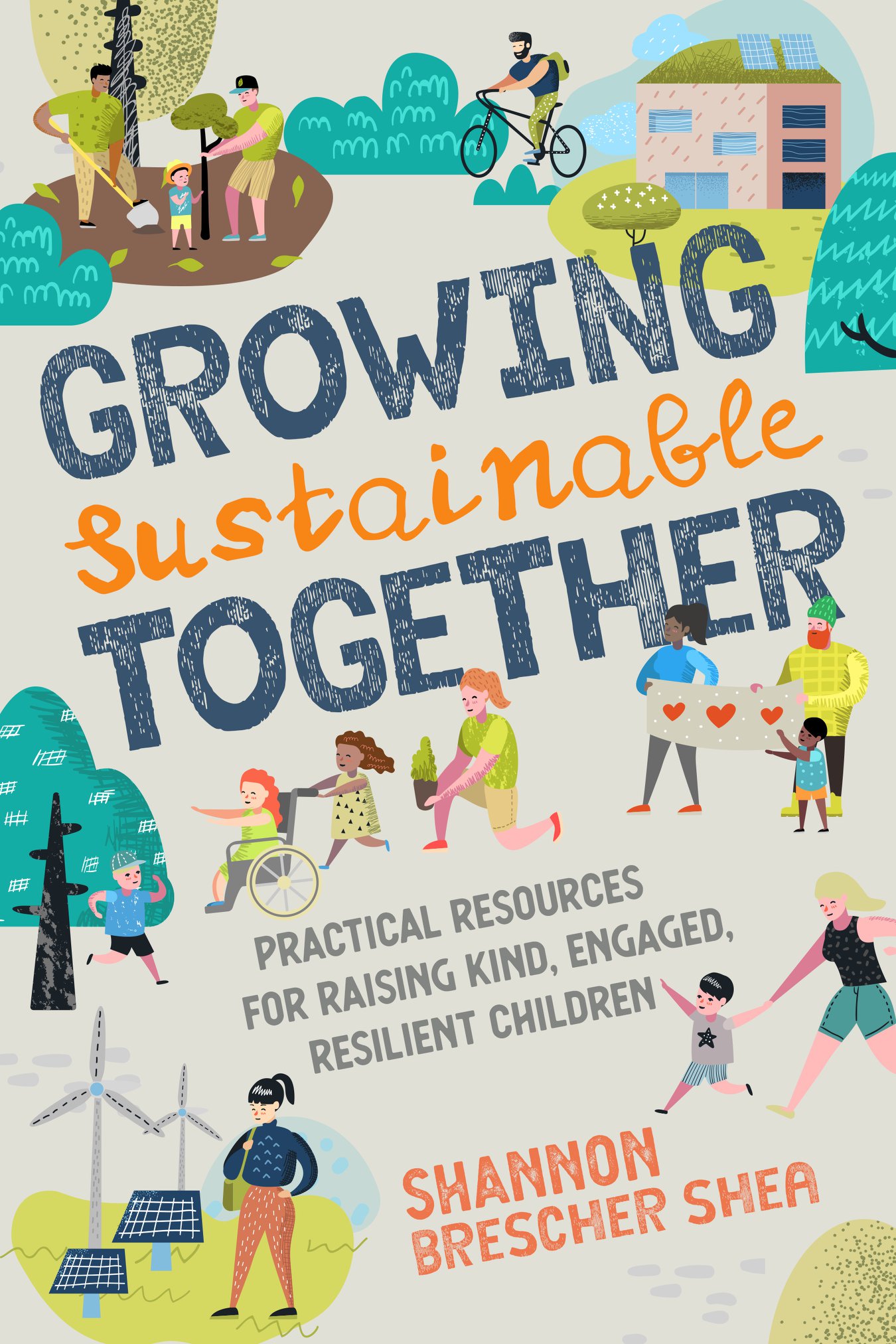
Easy Ways to Nourish Environmental Consciousness in Kids

With so many environmental concerns today, it’s tough to say which is the most pressing. It can be overwhelming to think about how to make a difference or what issue to start with. Toss in the daily activities that come with a couple kids, and the task may seem impossible.
In Growing Sustainable Together, Shannon Brescher Shea has presented a guidebook for parents. With a nice blend of education and parenting advice (plus a smattering of nature tips and plenty of resources), she provides a number of actionable tips and activities for families with children of all ages, addressing a number of environmental concerns. Each chapter addresses a separate area of environmental sustainability, and concludes with a comprehensive list of related books and other resources.
Shea immediately addresses what so many parents experience, the struggle to find balance between “mom guilt” and “green guilt.” We all want our kids to grow up healthy and happy AND we want them to learn to be responsible citizens. Our busy lives sometimes make it difficult to effectively teach our children how to be good guardians of the earth. We are constantly faced with temptations to take the easy route, such as driving our minivan to the corner store rather than walking or biking, or buying disposables rather than reusing what we have, even though we know that these things are wasteful.
Likening parenting to gardening, she says “We can’t make plants grow, but we can provide them with the right environment to do so.” Shea encourages parents to expose children to nature early and often, taking them on regular trips to parks and nature centers. She shares personal experiences to demonstrate that even young children can make significant contributions. As they grow, she recommends making family events of volunteer opportunities such as park clean ups and helping at community gardens. While working alongside community members, they learn the concepts of shared goals and working for the common good. They see that their efforts can make a difference.
Science backs up the idea that kids should spend more time outdoors. Not only is outdoor exercise good for the body and mind, time spent in open green space can lead to greater focus and attention and higher test scores. It has also been shown that those who grow up spending more time in green spaces have fewer emotional issues and better peer relationships. Planting and tending gardens, riding bikes, hiking, learning about plants and animals and even accumulating less stuff all come naturally to children. (How many parents have at one time noted that a child prefers playing with a box to the gift that came in it?) These and other activities Shea suggests are experiential in nature and teach responsibility, respect, empathy and delayed gratification, soft skills that are difficult to teach in today’s classrooms.
Shea is quick to say that this book is meant to be a toolkit, “to inspire and empower” parents. She recommends that readers choose activities that are right for their families, to adapt them as necessary, and to delve deeper if a passion arises. She encourages parents to at least occasionally let children take the lead, from following a child’s trail of questions to letting them plan complete activities (an entire chapter is dedicated to children who have taken initiative and made significant changes in their communities). She reminds us, “No one can do everything, but everyone can do something.” That’s something to ponder: If everyone did something, think about the global impact that would make.
Though a copy of this book was provided free of charge, no compensation was made for this review which is the honest opinion of the writer. KY




